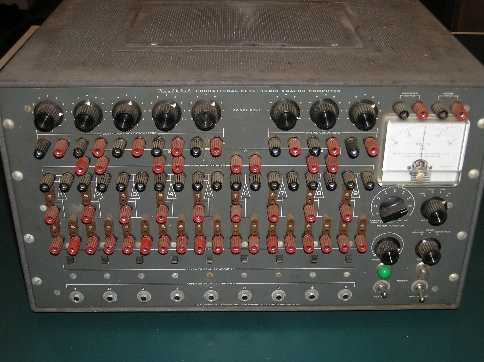|
computer (almost) anyone could afford. It was sold in kit or pre-assembled forms and was quickly and widely used in
industry and universities.
Unlike our modern binary computers, which accept only two values as entry (0 or 1), an analog computer represents input
and output data's in voltage levels. So, any positive or negative value could be read directly from the built-in
meter. An external oscilloscope could be also used as a display device, as well as a grapher for printed results.
In spite of its apparent simplicity, the EC-1 could solve a multitude of complex mechanical and mathematical problems
thanks to nine DC operational amplifiers, three initial condition power supplies, potentiometers, relay contacts,
high precision resistors and capacitors, and a built-in oscillator for repetitive operation (from 0.1 to 15 operations
per second).
The computer was described by Heathkit as "Excellent teaching aid for a course in computer electronics - Vividly illustrates the electronic analogies to mathematical problems - Handles problems as complex as fluid flow, damped
harmonic motion, and flight of a projectile in a viscous medium"
Computer problems could be 'programmed' by inserting several patch cords into the problem-board sockets and
thus linking in chain several built-in components together.
The EC-1 and other analog computers were used until 1965, when first affordable digital computers became available.
Here is some EC-1 unusual technical features taken from the Heathkit brochure:
* Amplifiers: Open loop gain approximately 1000. Output ±60 volts at 0.7 mA.
* Power supplies: 300 volts at 25 mA electronically regulated; variable from +250 to +350 volts
* Repetitive operation: Multivibrator cycles a relay at adjustable rates (0.1 to 15 cps)
|






